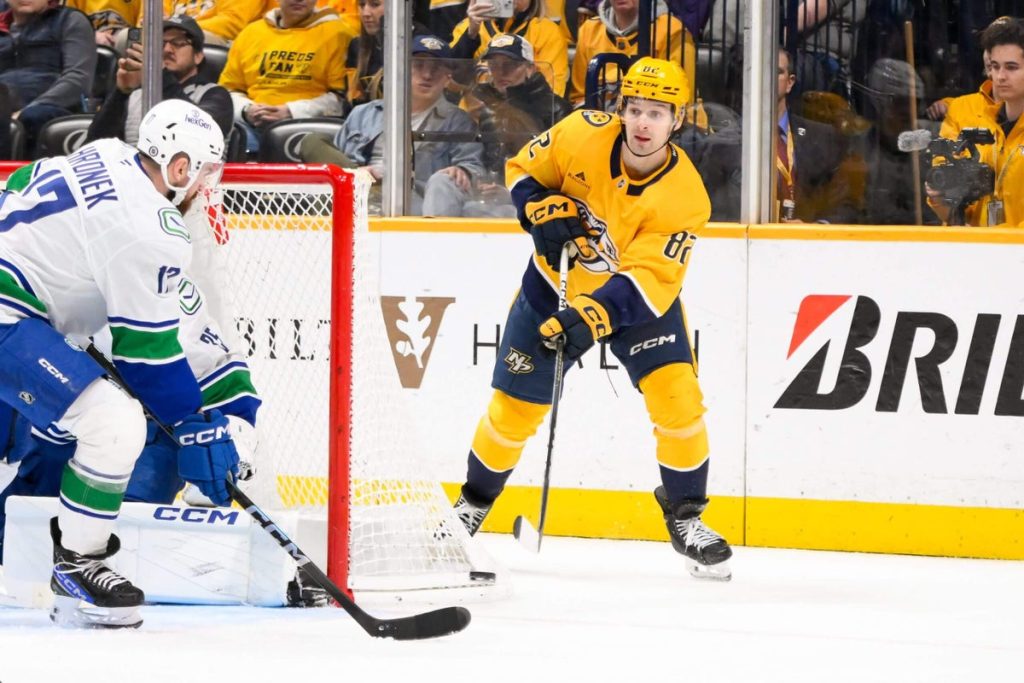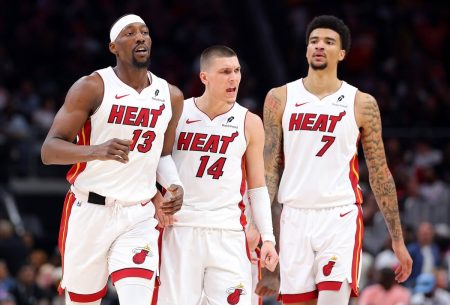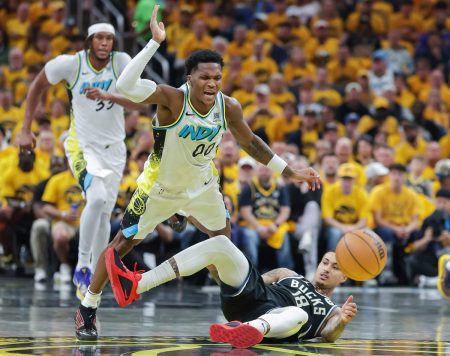The Vancouver Canucks are riding a wave of momentum as they enter the international break, having secured points in seven of their last eight games before the NHL paused for the 4 Nations Face-Off. This stretch of strong play is all the more impressive given the absence of their captain and most valuable player, Quinn Hughes, and the recent trade of J.T. Miller. While the team’s success can largely be attributed to solid goaltending, their enhanced speed and improved five-on-five play have also been key factors. With less than a month until the NHL trade deadline, the question on everyone’s mind is whether the Canucks should stand pat or continue to bolster their roster as they push for a wild-card spot in the Western Conference.
The Canucks’ front office, led by general manager Patrik Allvin and president of hockey operations Jim Rutherford, has a reputation for being aggressive and decisive in their moves. The team is currently in a transitional phase following the trade of J.T. Miller, and their primary focus is on strengthening their lineup down the middle. Acquiring centers, however, is a challenging and expensive endeavor in the NHL trade market. Recent deals, such as the New York Rangers’ acquisition of J.T. Miller and the Dallas Stars’ trade for Mikael Granlund, highlight the high costs involved. While the Canucks are actively exploring options to upgrade their center depth, they are also reportedly holding onto their 2025 first-round pick, which may limit their flexibility in trade discussions.
One name that has emerged as a potential target is Brayden Schenn, a 33-year-old center currently with the St. Louis Blues. Schenn is a physical, efficient player who has consistently delivered strong offensive production and can hold his own against top opponents. While his age and contract (a $6.5 million cap hit through his age-36 season) may give pause, Schenn’s championship pedigree and leadership qualities make him an intriguing option. The Canucks could benefit from his physicality and experience, especially alongside a playmaking winger like Conor Garland. However, the Blues are reportedly asking for a high price, and the Canucks would need to weigh the costs against the potential benefits of adding a proven veteran to their lineup.
Another option is Dylan Cozens, a 24-year-old center with the Buffalo Sabres. Cozens showed immense promise early in his career, including a breakout 2022-23 season where he scored 31 goals and 68 points. However, his production has regressed significantly since then, and he is currently on pace for just 41 points this season. Despite his struggles, Cozens remains an attractive bounce-back candidate due to his youth, physical tools, and potential for growth. The Sabres, however, are unlikely to part with him cheaply, and the Canucks would need to offer significant assets to make a deal happen. Given Cozens’ contract and the challenges of matching the Sabres’ asking price, this may not be a realistic option for Vancouver.
The Canucks could also consider Tommy Novak, a 27-year-old center with the Nashville Predators. Novak is a creative playmaker with strong offensive skills, but his two-way game and consistency have been questioned. Despite his struggles this season, Novak’s puck-handling and speed could make him a valuable addition to the Canucks’ middle-six forward group. However, his defensive limitations and lack of physicality may not align with the team’s needs. Additionally, the Canucks already have Filip Chytil playing a similar role, which may make Novak a less appealing target. While he could be a low-risk, high-reward pickup, it’s unclear if he fits the mold of what Vancouver is looking for.
Casey Mittelstadt, a 26-year-old center with the Colorado Avalanche, is another player who has been mentioned in trade rumors. Mittelstadt has shown flashes of offensive brilliance, including a 59-point season in 2022-23, but his defensive metrics and overall consistency have been concerns. He has struggled to find his footing in Colorado, and his production has been uneven this season. While Mittelstadt’s playmaking abilities and skill set could complement the Canucks’ existing talent, his lack of physicality and defensive reliability may not address the team’s most pressing needs. Additionally, the Avalanche are likely to seek a significant return for a player they acquired as part of a high-profile trade last season.
Finally, Josh Norris, a 25-year-old center with the Ottawa Senators, has also been linked to the Canucks in the past. Norris is a gifted shooter who has shown the ability to play against tough competition and win faceoffs at an impressive rate. His injury history and contract, however, may give the Canucks pause. The Senators are likely to hold onto Norris, given his importance to their lineup and his potential to develop into a top-tier center. With Ottawa on track to make the playoffs, the Senators have little incentive to trade Norris, and the Canucks would likely need to overpay to bring him to Vancouver.
In conclusion, the Canucks face a challenging decision as the trade deadline approaches. While they have the opportunity to strengthen their lineup and solidify their playoff position, the high costs and limited options in the trade market make it a hazardous landscape. The team must carefully weigh the immediate benefits of adding a center like Brayden Schenn or Dylan Cozens against the long-term implications of trading valuable assets. With the 2025 first-round pick reportedly off the table, the Canucks may need to explore creative solutions or wait until the offseason to address their needs. One thing is certain: the road ahead will require careful planning and a keen eye for value if the Canucks hope to build a competitive roster for the future.









